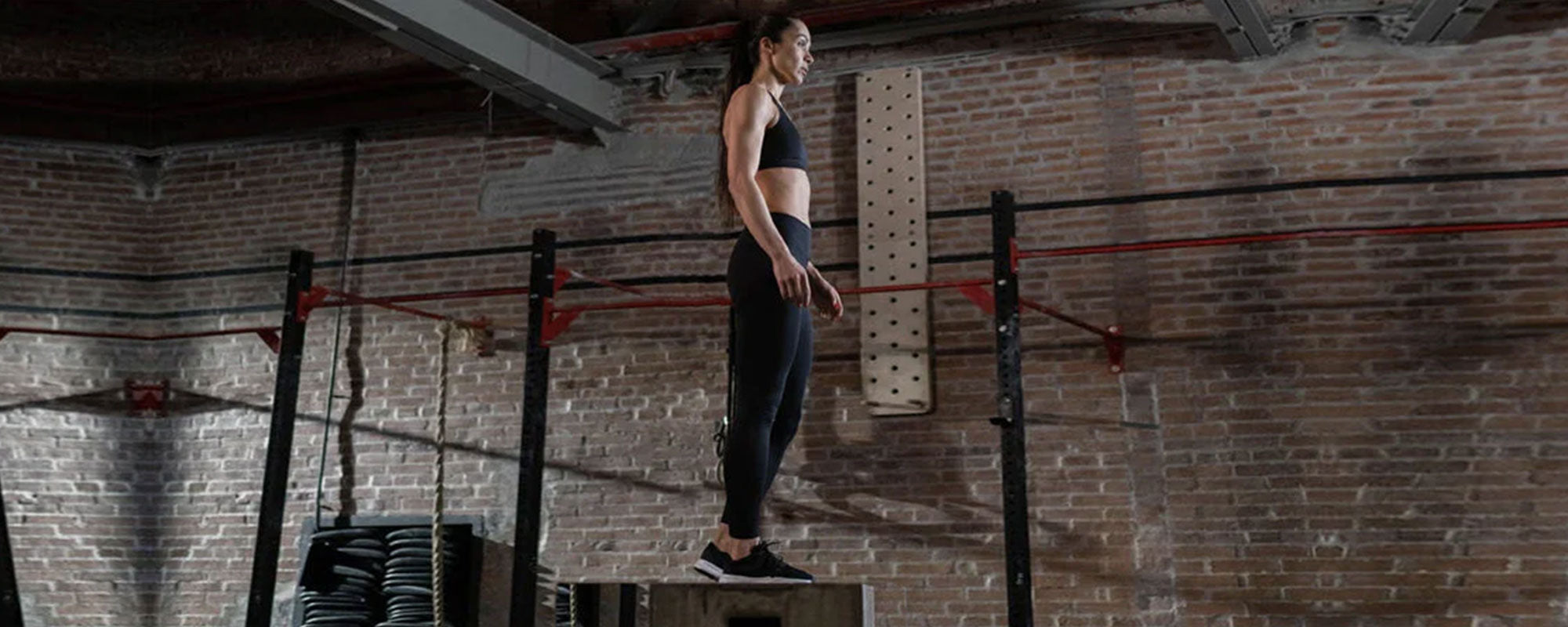Table of content
Powerful and explosive movements are the features that every athlete requires to succeed. Plyometrics train your body to move more quickly and explosively, simulating the physical demands of a battle. Before continuing on your own, it's a good idea to start with a plyometrics-experienced trainer. Plyometric exercises should be performed no more than twice a week in short bursts at maximum intensity, followed by a short breather before going on to the next set or activity.
1. What is Plyometrics or Plyo?
Plyometrics, often known as Plyo workouts, was created to help sprinters improve their performance. As a result, plyometrics has become a popular training technique in practically every sport.
Plyometric boxing workouts, on the other hand, are designed to generate explosive power in the targeted muscle group. The definition of "power" in plyometrics is a little more specific, as it refers to exerting the highest force possible in the shortest amount of time. As a result, plyometric activities are distinguished by rapid and explosive movements. A typical Plyometric workout consists of three phases: lengthening, load, and fire.
- Lengthening:
This is the initial phase, during which your muscles lengthen in an effort to absorb impact and slow you down. Several muscle groups in your legs stretch as you fall from a jump and descend into a squat position, for example, to absorb the impact energy. Consider how a rubber band might be stretched out.
- Load:
When your muscle has reached its maximum length and can no longer go any farther, it is ready to contract again. This moment must feel as if it takes no time at all to reap the full rewards. As a result, when you sink into your squat, you don't take a breather before jumping again; instead, you jump right away. This teaches your body to release all of the absorbed impact energy in an explosive movement.
- Fire:
When your muscles contract quickly and explosively, your body is moved in a new direction. When done properly, your body not only applies the force generated by your muscular strength, but also the energy saved during the lengthening phase. This enables you to apply greater force than you could with only your muscles.
2. What are the Benefits of Plyometrics for Boxing?
Plyometrics is a popular training method for improving explosive performance in a variety of athletic and sporting environments.
- Increases the RFD (Rate of Force Development) – this is vital for punch force and hand speed.
- Improves balance, footwork speed, and movement skills.
- Reduce the chances of injury.
- Make your Warm-Ups better, increase motor unit recruitment.
- Beneficial for single and combinations of punches – improve eccentric utilization
Plyometrics training for boxing is primarily used to improve reactive strength which provides an improved rate of force development and impulse. Hence, contributing to improved performance during explosive athletic tasks such as sprinting, jumping, and changing direction.
3. Rules for Proper Plyometric Training: Tips for Beginners
3.1. One or Two Workout Per Week Only
Take your time and give rest to your muscles, excessive exercise can harm your muscles. Plyo is the most explosive exercise that pushes your muscles to the extreme limit. Working out plyometrics one or two times is enough and be sure you are not having any lingering pain or soreness.
3.2. Perform at the Beginning of a Workout
Though they are fatiguing, draining and the most explosive exercises, make sure that you feel fresh while you’re performing them. By doing that, you will be able to get the most out of them and still reduce your chances of injury.
Also read: Tips to Prevent Injuries in Boxing
Perform in Front of the Mirror
It is hard for oneself to make sure that you are doing the exercise with proper form or not until you get outer assistance. So, performing plyometrics in front of a mirror helps you to make sure that you are doing the exercise with proper form and keeping your body in proper alignment.
3.3. Combine Plyo with other Movements
Combining plyometric movements is a way to take your workout tendency to the next level. It is fine if you’re going to combine plyometric exercises for boxing footwork with upper-body plyometric exercises. One thing that needs to be kept in mind, ensure it is not the same muscle group.
3.4. Combine with Strength Training, not Cardio
Although plyometrics and strength training both are anaerobic exercises and fall in the same category, they can be done together. Whereas, if you are planning to go for a run or a bike ride, save plyometrics for the other day that you are doing other strength moves.Do not forget to Warm-Up before Plyo.
A five-minute simple dynamic warm-up like light jogging followed by five minutes of butt kicks, high knees, side shuffling or skipping, is enough before getting into plyometric exercises for boxing. Once you are done with your whole workout, foam rolling helps to prevent soreness.
4. Best Plyometric Exercises for Boxing
4.1. Squat Jumps
To develop leg explosiveness and power, nothing could be more effective than squat jumps.
How to Do it:
- Stand with your feet slightly wider than shoulder-width apart, with your feet pointed forward.
- Cross your arms confronting your chest.
- Slowly lower yourself into a squat until your thighs are parallel to the ground.
- On the way up, push up explosively, jumping as high as possible.
- Land softly on your feet and make sure you’re in a proper starting position after landing.
| Sets | Repetitions |
|---|---|
| 3 | 10 reps each set. |
4.2. Plyometric Push-Ups
Plyo push-ups can also help you improve your shoulder and chest muscles' explosive qualities, which are important for delivering rapid punches.
How to Do it:
- Start with getting into the basic push-up position with your hands slightly wider than your shoulders.
- Lower yourself down towards the floor, keep your pace normal and motion-controlled.
- Halt is just short of touching the floor.
- On the way up, push yourself up as explosively as possible so that your hands jump off the floor.
- Land softly back into the push-up position.
| Sets | Repetitions |
|---|---|
| 3 | 6 reps each set. |
4.3. Bounding
Bounding improves leg strength and power. It is also useful in teaching your legs how to limit the amount of time they’re on the ground before they tend to change direction.
How to Do it:
- Extend one foot forward as far as possible before landing on the other foot.
- As soon as you land on your lead foot, explode forward with your back leg swinging forward.
- Remain leaping off one foot and onto the other as quickly as possible.
- It is essential to decrease the amount of time your foot is on the floor.
| Sets | Repetitions |
|---|---|
| 3 | 10 bounds each set. |
4.4. Medicine Ball Pass
The medicine ball pass improves the shoulder and chest muscles' explosive qualities, which are necessary while throwing a punch. Performing with a partner or against a wall is beneficial either way.
How to Do it:
- Stand your legs straight about slightly beyond shoulder width.
- Hold a medicine ball at chest height with both hands.
- While keeping your feet planted, thrust the medicine ball as far forward and explosively by using both hands.
| Sets | Repetitions |
|---|---|
| 3 | 6 reps each set. |
4.5. Medicine Ball Slams
Medicine ball smashes help to increase upper body explosiveness as well as the ability of the abdominals and core to maintain body stability.
How to Do it:
- Grab a medicine ball and hold it over your head with both hands.
- Commence with your feet shoulder-width apart, then step forward slightly with one foot and explode forward and bent at the waist, throwing or “slamming” the medicine ball afore as hard as possible on the ground.
| Sets | Repetitions |
|---|---|
| 3 | 6 reps each set. |
5. Takeaway
Plyometrics simulate the physical demands of a conflict by training your body to move more quickly and explosively. It's a good idea to start with a plyometrics-experienced trainer before going it alone. Plyometric exercises should be performed no more than twice a week in short bursts at maximum intensity, followed by a short respite before going on to the next set or activity.










Leave a comment
This site is protected by hCaptcha and the hCaptcha Privacy Policy and Terms of Service apply.